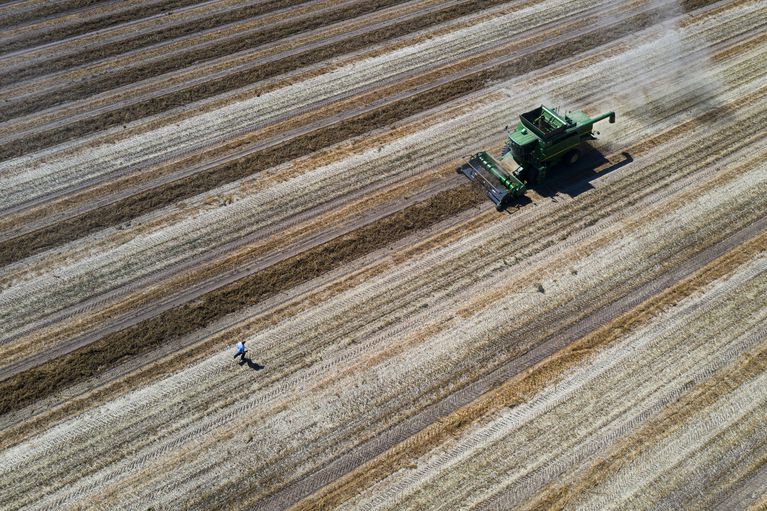This article was published on: 09/28/22 10:56 AM
A program offering cash payments to people willing to loan their water to struggling farmers looks to overcome challenges in its second year.
A highly anticipated program designed to ease water shortages for Central Oregon farmers will continue for a second year.
The Deschutes River Conservancy, Central Oregon Irrigation District and North Unit Irrigation District announced last week that they will extend their water bank pilot project, despite the challenges they faced in the program’s inaugural year.
Organizers say the water bank could eventually include other irrigation districts in the Deschutes Basin. If successful, the program could become a model for other parts of the state struggling with water shortages.
“Water law is really rigid across the West, and it’s really hard to move water even if moving water makes a lot of sense,” said Kate Fitzpatrick, executive director of the Deschutes River Conservancy.
“So absent overturning and reforming water law at a large scale, these voluntary banks can help ease some of the pain and provide some solutions in the near term.”
The water bank offers cash payments to senior water rights holders in the Central Oregon Irrigation District to give up their annual allotment of water and let their land go dry. By doing so, they leave more water in the system for junior rights holders in North Unit to use downstream.
Oregon law allocates water to senior water rights holders first, so junior rights holders are more likely to come up short of what they need to grow crops in low water years.
Fitzpatrick said the water bank incentivizes senior rights holders to use less, which helps junior rights holders in Jefferson County’s large agricultural sector and benefits the Deschutes River by keeping more water instream for a longer period of time.
“The bottom line is we’re trying to reduce demands on a voluntary basis so that we can meet other needs in the basin,” she said.
Beleaguered farmers received only a splash of extra water from the bank this summer. Despite a fair amount of interest from people wanting to cash in on water they didn’t plan to use, leaky infrastructure and other water distribution issues limited who could participate.
About 150 Central Oregon Irrigation District members expressed interest in giving their water to North Unit irrigators this year, but only 17 were accepted. Those users set aside about 90 acres’ worth of water, which was far less than the 1,200 originally anticipated.
North Unit executive manager Mike Britton said even the relatively small amount of water banked this year was a success because it helped prove the concept could work.
“Our guys were cut back to about 25% of their normal allotment this year,” Britton said. “Any additional water is good water. Whether it’s 50 acres or 500 acres that make their water available to North Unit, we’ll take it.”
Organizers say the first year underlined the need for major investments in the hundreds of miles of canals, ditches and other infrastructure that deliver water across Central Oregon. Repairs and improvements over time will allow the water bank to scale up and move water more easily throughout the region, they said.
Their focus now is on recruiting more volunteers to put water in the bank next year to gauge interest in the program.
Central Oregon Irrigation District manager Craig Horrell said in a press release that his district was excited to offer members the chance to loan their water for another year.
“This complements our water conservation work and is another tool we can use in our efforts to find basin-wide solutions to water issues,” Horrell said.
Water users can see if they’re eligible to participate in the water bank by submitting a form to the Deschutes River Conservancy by Nov. 1.
-Bradley W. Parks




